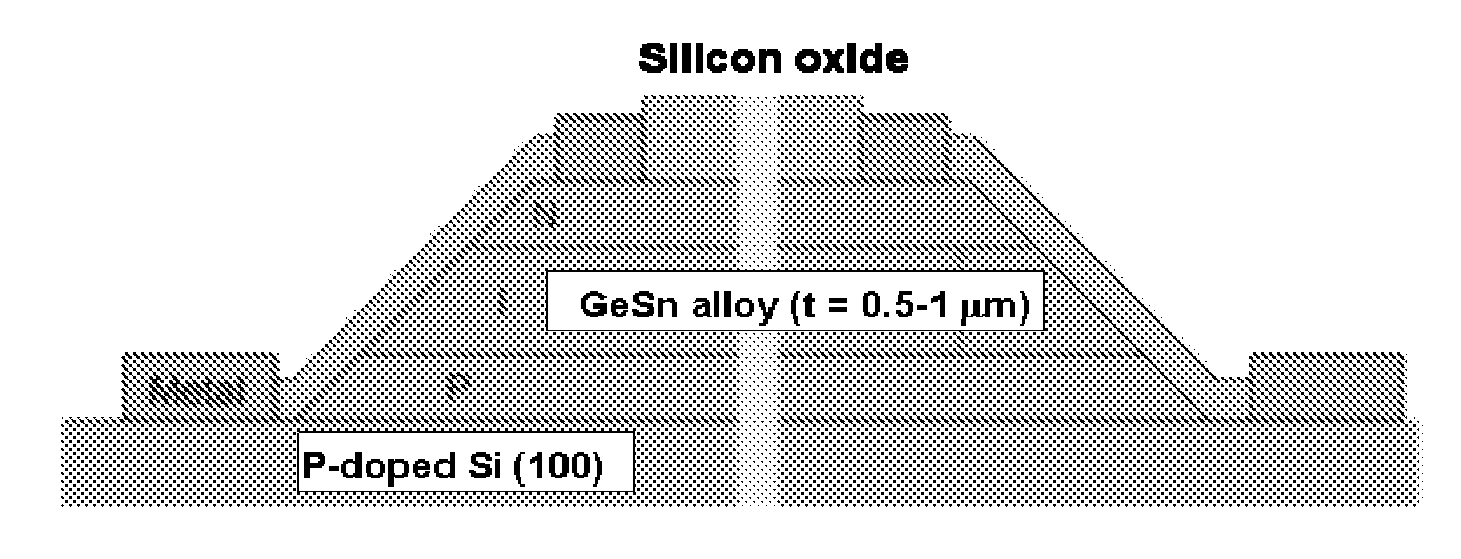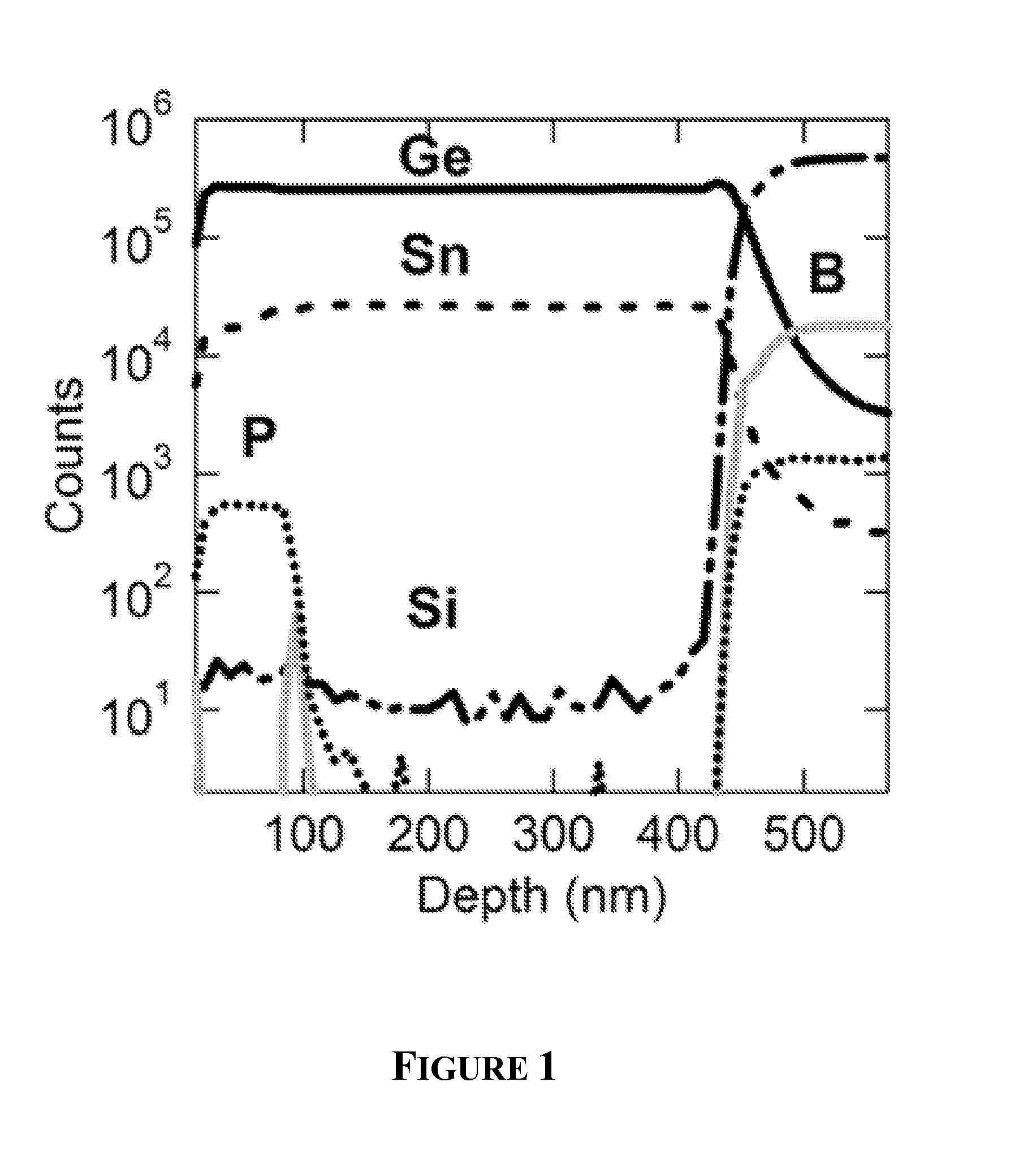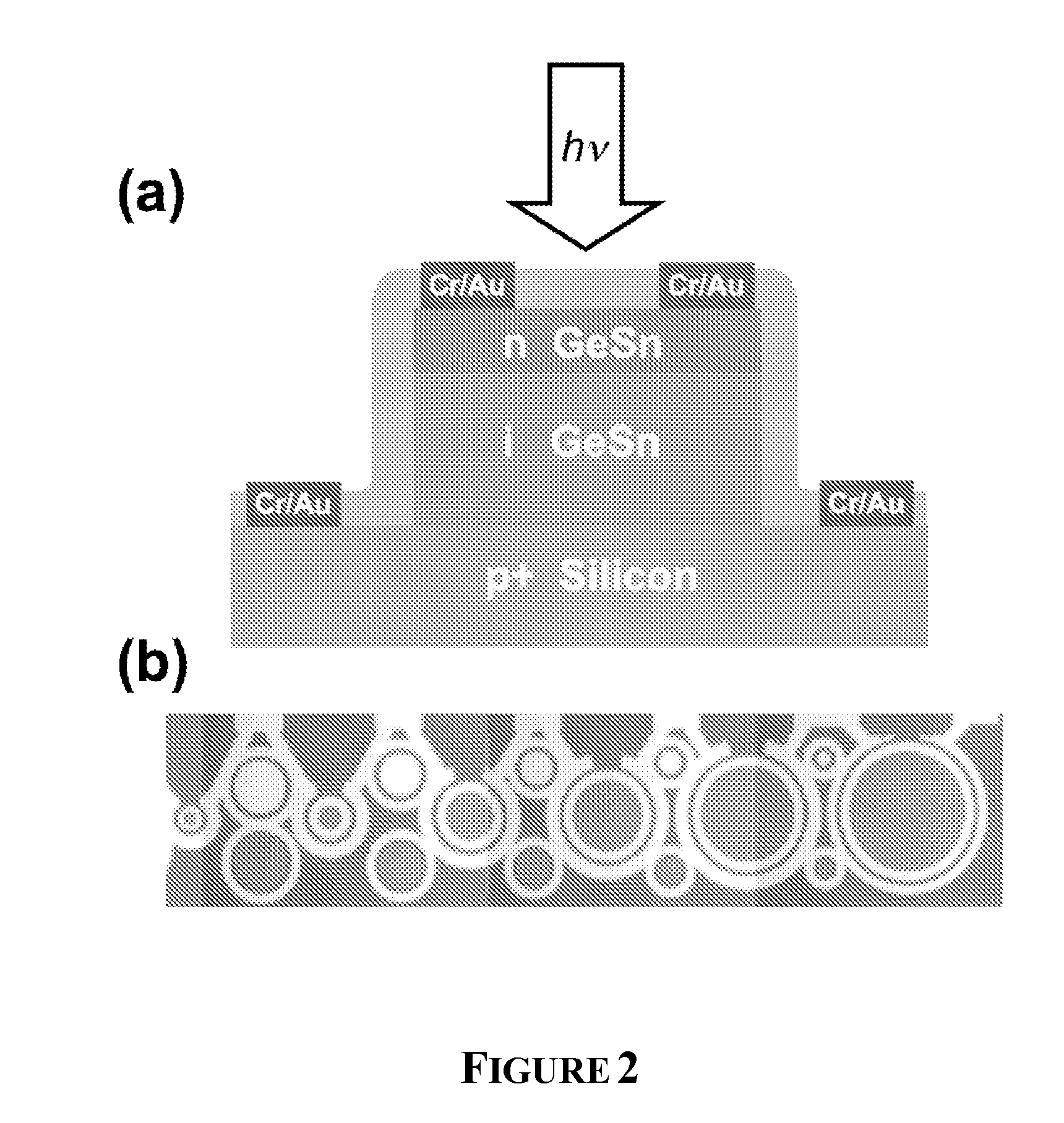GeSn Infrared Photodetectors
a technology of infrared photodetectors and infrared light, which is applied in the field of infrared light detectors, can solve the problems of compromising the compatibility with cmos technology, increasing the thermal budget, and drastically reducing the responsivity of ir detection, so as to increase the optical absorption, increase the quantum efficiency, and expand the range of ir detection.
- Summary
- Abstract
- Description
- Claims
- Application Information
AI Technical Summary
Benefits of technology
Problems solved by technology
Method used
Image
Examples
example 1
Optoelectronic Ge1-ySny Alloys
[0146]From a fundamental view point Ge1-ySny alloys on their own right are intriguing IR materials that undergo an indirect-to-direct band gap transition with variation of their strain state and / or compositions. They also serve as versatile, compliant buffers for the growth of II-VI and III-V compounds on Si substrates.
[0147]The fabrication of the Ge1-ySny materials directly on Si wafers has recently been reported using a specially developed CVD method involving reactions of Ge2H6 with SnD4 in high purity H2 (10%). Thick and atomically flat films are grown at about 250 to about 350° C. and possess low densities of threading dislocations (˜105 cm−2) and high concentrations of Sn atoms up to about 20%. Since the incorporation of Sn lowers the absorption edges of Ge, the Ge1-ySny alloys are attractive for detector applications that require band gaps lower than that of Ge (0.80 eV). The absorption coefficient of selected Ge1-xSnx samples, showing high absor...
example 2
Fabrication of Ge1-xSnx Infrared Detector
[0150]Ge0.98Sn0.02 active material was grown on boron-doped (p-type) Si(100) with resistivity 0.01 Ωcm. Prior to growth, the wafers were chemically cleaned by a modified RCA process and then dipped in 5% HF solution to hydrogen-passivate their surface. The UHV-CVD growth of the intrinsic Ge0.98Sn0.02 was conducted by reactions of digermane Ge2H6 and deuterated stannane SnD4 at 350° C. and 300 mTorr, yielding an average growth rate of about 10 nm / min. A post growth annealing step, consisting of 3 cycles at 750° C. for 2 seconds, was used to reduce the levels of threading defects and ensure that the material is devoid of any residual strains. The wafers were then loaded back into the growth chamber to conduct the deposition of the n-type capping layer using a 1% admixture P(GeH3)3 as the source of the P atoms. This compound and related families of single source dopants [(P,As)(MH3)3, M=Si,Ge] are the key enabling ingredient for low-temperature ...
example 3
Fabrication of Ge1-xSnx Infrared Detector
[0156]A infrared detector was fabricated as illustrated in cross-section in FIG. 6 comprising Ge1-xSnx pin regions on a p-doped Si substrate. The preliminary test results indicated that the fabricated PIN devices show diode I-V characteristics and also exhibit significant IR photoresponse at 1.55 μm. In these devices and the related photoconductor counterparts, linear, ohmic contacts were readily demonstrated on top of the n-type Ge1-xSnx layers indicating that successful high doping of these Ge-rich semiconductors is achievable using hydride precursors developed at ASU. The in situ protocols described above using gaseous As(GeH3)3 reactants enable facile incorporation of the As atoms into the lattice at low growth temperatures of 350° C., and promote full activation of the entire dopant concentration (˜1018 cm−3-1020 cm−3).
[0157]The newly developed Ge1-xSnx photodetector and photoconductor structures are attractive devices in their own right...
PUM
 Login to View More
Login to View More Abstract
Description
Claims
Application Information
 Login to View More
Login to View More - R&D
- Intellectual Property
- Life Sciences
- Materials
- Tech Scout
- Unparalleled Data Quality
- Higher Quality Content
- 60% Fewer Hallucinations
Browse by: Latest US Patents, China's latest patents, Technical Efficacy Thesaurus, Application Domain, Technology Topic, Popular Technical Reports.
© 2025 PatSnap. All rights reserved.Legal|Privacy policy|Modern Slavery Act Transparency Statement|Sitemap|About US| Contact US: help@patsnap.com



